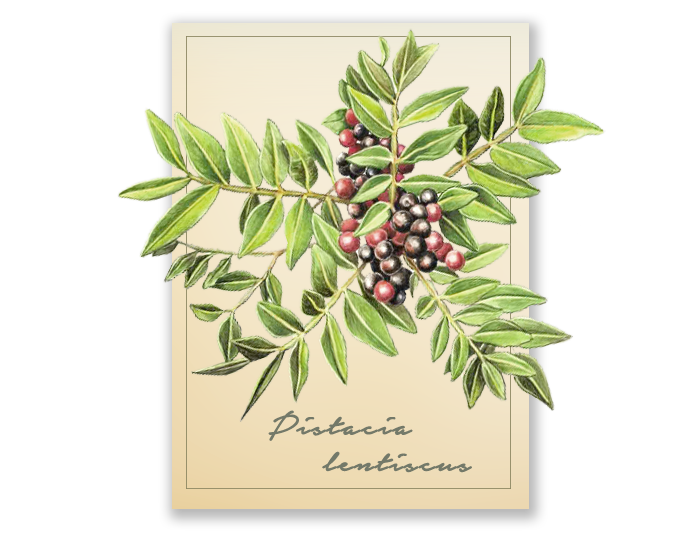
Why plants from Puglia’s rocky plateau – the Murgia?
It is no coincidence that Frederick II of Swabia was enchanted by this land. He defined is as “stillante latte e miele, prediletta tra tutte” (“oozing milk and honey, the most favourite of them all”). The landscape surrounding the Castel del Monte – the most famous of Frederick II’s castles – is rough: sun-burnt, wind-swept rocky hills extend as far as the eye can see. But it is precisely because of the severity of its geological and climactic characteristics that this land keeps surprising with the extraordinary generosity of its medicinal botanical species. Many have strong eudermic properties: the necessity to adapt to such extreme conditions makes the plants particularly strong, and full of resources.
Wild plants
Wild plants boast a concentration of active ingredients which is vastly superior compared with cultivated plants. Their endure daily a real struggle for survival, which makes them more resilient and tenacious, while the life of cultivated plants is guaranteed and promoted by human intervention. In plants, the majority of active ingredients have a protective and defensive function: for this reason they are especially present in wild plants, which endure frequent moments of “crisis”. Industry tends not to use wild plants much, due to the high costs of the harvest and the limited availability of raw material. We at Potentilla have decided to go for a limited line of products, in order to use the most powerful active ingredients nature can offer. Furthermore, the use of local raw material allows the ingredients to be extracted as soon as they have been harvested, when the plant still retains what we call “its soul”.

Wild oat (Avena fatua)
PARTS USED: Whole plant
KEY COMPONENTS:
Avenine:toning alkaloid. Beta-glucans: linear polysaccharides of glucose, to hydrate, heal, and protect against UV rays Lysine: essential amino acid with several functions, including the production of collagen which helps repair damaged cells.

Dog rose (Rosa Canina)
PARTS USED: hips
KEY COMPONENTS:
Vitamin C and E: together, they protect the hydrophilic and lipophilic properties of the skin, reducing the damage created by UVA and UVB rays. Bioflavonoids: composite polyphenols, strong natural antioxidants, very effective in contrasting the aging process, and in preventing the formation of age spots. Linoleic, oleic, and linolenic fatty acids: these are substances the human body cannot produce by itself, but they are precious in nourishing the epidermis.

Wild carrot (Daucus Carota)
PARTS USED: Roots
KEY COMPONENTS:
Beta-carotene (pro-vitamin A): a necessary element for the correct growth and reparation of tissue; it favours the smoothness and health of the skin, protecting it from pollution (it has an anti-oxidant effect against free radicals). Estensin: a glycoprotein present on the cell membrane of the carrot. Thanks to the high percentage of hydroxyproline it is similar in composition to collagen, and is therefore excellent in promoting the elasticity of the skin.

Calendula (Calendula arvensis)
This is the ‘flower of the sun’ par excellence, as we can see from its yellow-orange colour and its Latin terms Sponsa solis “spouse of the sun”, and Solesquium “that which follows the sun”. Calendula Officinalis in fact has all the virtues of the sun, and gifts them to our skin by making it glow. It was known in ancient medicine as a cure for all kinds of ailments: from redness of the skin and insect bites, to ulcers and eczema.
PARTS USED: Flowers
KEY COMPONENTS:
Malic acid:its skin-lightening properties have a brightening and softening effect. Triterpenic alcohols and glycosides: anti-bacterial and anti-fungal, with skin-toning properties. Carotenoids: to improve the look of the tissues with its restorative effects.

Mastic (Pistacia Lentiscus)
PARTS USED: Fruits
Modalità estrattiva: Estratto oleoso
KEY COMPONENTS:
Fatty acids: hydrating and nourishing.Vitamin E:antioxidant par excellence, it contrasts the aging process with its protective action on cell membrane. Phytosterols: precious allies of the skin, they promote the metabolic synthesis of collagen and elastin fibres; it is clear that the endogenous production of these two substances is vital in anti-aging action, and in the regeneration of tissue tropism.

Mallow (Malva sylvestris)
PARTS USED: Flowers and leaves
KEY COMPONENTS:
Chlorogenic and caffeic acid:anti-inflammatory and toning. They protect the skin from the damage of UV radiations, especially those with the most dangerous wavelength (UVB and UVC). Galacturonic acid: found in its mucilage, it has gelling and emollient properties. Anthocyanins (malvin, malvidin): anthocyanins are glycosides which can be found on the blue-purple flowers and fruit. The function of these glycosides in nature is still to be fully discovered: apart from attracting pollinating insects, studies have demonstrated their ability to protect plants from bad sun radiations. This specific function is in fact what affects the skin: they protect from the oxidisation induced by ultraviolet light (UV).

Hypericum (Hypericum perforatum)
PARTS USED: Flowers
KEY COMPONENTS:
Hypericin and Hyperforin: a naphthodiandrone and a phloroglucinol stimulating cellular renewal, reason for which hypericum oil is an excellent remedy against burns and wounds. In the cosmetics field, its action is toning and firming for the skin. Flavonoids, Xanthones, and Tannins: highly anti-oxidising polyphenolic compounds, they “sweep away” free radicals.

Helichrysum (Helichrysum italicum)
PARTS USED: Flowers
KEY COMPONENTS:
Essential oils (pinene, eugenol, linalool): antiseptic and antioxidant effects. Caffeic acid: strong antioxidant and anti-inflammatory properties, to protect the skin from the negative effects of UV rays.

Cleavers (Galium aperine)
PARTS USED: Flowers and leaves
KEY COMPONENTS:
phenolic acids (caffeic, gallic): These compounds have an antioxidant activity, that is a promising tool in eliminating the causes and effects of skin aging
tannins: their astringent action may act against lymph stagnation, that provokes puffiness.
